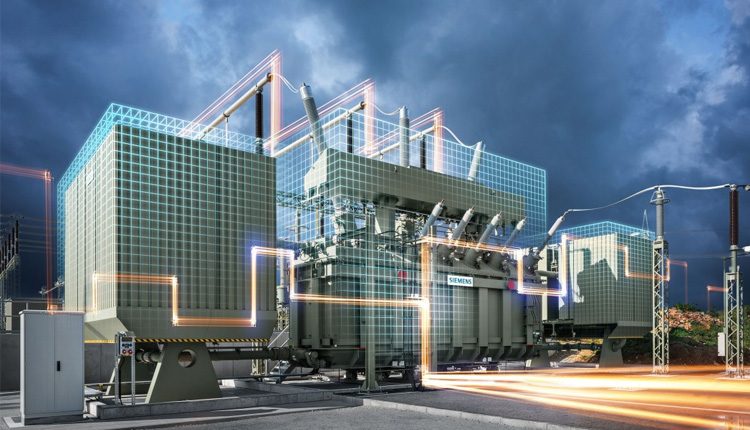The industrial world is in the midst of a massive technological shift. As of 2018, 77% of surveyed manufacturers had an IoT solution in place, a figure that’s undoubtedly risen since. With facilities becoming increasingly tech-centric, industrial power is a more prominent concern than ever.
Companies face two major considerations with facility power supply and management. First, with extra technology in place, many industrial buildings require more power than they used to. Second, as the industrial world moves toward efficiency and sustainability, companies may want increasingly efficient and sustainable transformers.
For these two reasons, designing transformers for industrial buildings is something more companies will have to think about. To that end, here’s a guide for creating these transformers and enabling the next generation of industrial power.
Complying With Codes and Regulations
Like everything else in an industrial facility, transformers must adhere to local and federal regulations. Some of these, like the National Electrical Code, are the same across every state, but other requirements will vary. When state codes differ from these broader regulations, the state rules take precedence.
Before the design process starts, the lead engineer must understand all applicable safety codes. Since these regulations can change annually, it doesn’t hurt to review the current legislation before starting. After settling on a final design, engineers should check codes once more to ensure the transformer complies with them.
Violations of these regulations can result in hefty fines, so it’s always worth the time it takes to ensure compliance. It doesn’t matter if a transformer excels in every other area if it’s illegal.
Meeting a Facility’s Electrical Needs
After reviewing safety regulations, the next step in designing industrial transformers is to consider the facility’s power needs. Industrial power involves many more possibilities than residential electricity, so this isn’t always as straightforward as it would seem. For example, whereas almost all homes rely on utility companies, industrial facilities may generate power in-house.
If the facility doesn’t generate enough to power the entire plant, transformer design should account for these diverse energy sources. Transformers for utility grids may also have to comply with the power company’s requirements. The electricity’s origin is only part of the equation.
Industrial facilities require a lot of electricity, but more than that, they house various machines with different needs. They often use several different voltages, so transformers must deliver the correct voltage to the right application. Any mistakes in this process could ruin electrical equipment.
Safety Considerations
Safety is always a concern with electricity, especially with the amount of power involved in industrial applications. Keeping circuits separate and insulated from one another is paramount to avoiding voltage-related issues. Similarly, industrial transformers need sufficient insulation to protect any employees who have to access it.
One of the most prevalent safety solutions is to use pad-mounted transformers, which lock electrical parts behind steel doors and rest on a concrete pad. This design keeps shock hazards away from exposure and grounds the entire system. High-resistance grounding is another safety option facilities may want to consider.
High-resistance grounding uses a resistor between the neutral and ground, limiting the ground-fault current. This limitation helps avoid electrical faults that would cause machines to shut down or shock employees. No matter the specific approach, safety should always be part of transformer design, not an afterthought.
Managing Temperature
Temperature management is essential for industrial power, since systems could quickly overheat when dealing with this much electricity. There are two main cooling options — dry-type and liquid-filled transformers. As their names imply, liquid-filled transformers rely on liquid cooling, whereas dry-type transformers use airflow.
It’s possible to install dry-type transformers indoors. They are typically safer than liquid-filled options, but aren’t always ideal for industrial power. They cool less efficiently, so when there’s a lot of energy involved, they run the risk of overheating. Installing these transformers will almost certainly require additional ventilation to remove heat, which can be costly.
While liquid-filled transformers have to be outdoors and could be riskier, they’re typically better for larger facilities. They do a better job at cooling, so they can handle more energy-intensive applications. They also don’t require additional cooling systems, but they must comply with government agencies’ and insurance companies’ specific regulations.
Size
Transformer size is easy to gloss over, but proper sizing can significantly improve efficiency and reliability. Designing a transformer that’s larger than a facility needs will deliver a consistent amount of energy, but won’t be cost-effective. On the other hand, undersized equipment may not be able to support the facility at peak hours.
Outages cost the U.S. more than $100 billion annually, but inefficiency will also cost businesses. To find the ideal size, engineers need to closely analyze a facility’s power usage to accurately estimate peak consumption. They can also take advantage of cooling to maximize transformer capacity.
The more efficient a transformer’s cooling system, the more it will be able to deliver. Additional cooling packages may cost more up front, but could lead to savings in the long term. With better cooling, transformers could provide more power without having to be bigger.
IoT Capabilities
The IoT revolution is well underway, and industrial power needs to account for it. Higher energy needs aren’t the only IoT-related consideration for transformers, either. Transformers themselves can feature IoT capabilities, and facilities should consider this option.
IoT sensors in a transformer can measure and communicate power consumption and efficiency. By adjusting power delivery in real time based on usage in different parts of the grid, they maximize reliability while minimizing waste. They also enable remote access, letting employees check energy consumption without having to access the transformer physically.
These technologies will be a central part of smart grids in the future. By installing them now, facilities can get a head start on industrial power’s future.
Industrial Power Can Be Complicated
There are many considerations with industrial transformers. If engineers take the time to account for all these factors, though, it will lead to safer, more efficient electrical systems. With industrial power, it’s better to take time in the planning phase than to address a costly mistake later.
Article by —
 Megan Ray Nichols
Megan Ray Nichols
Freelance Science Writer
[email protected]
www.schooledbyscience.com/about
Read More Articles



